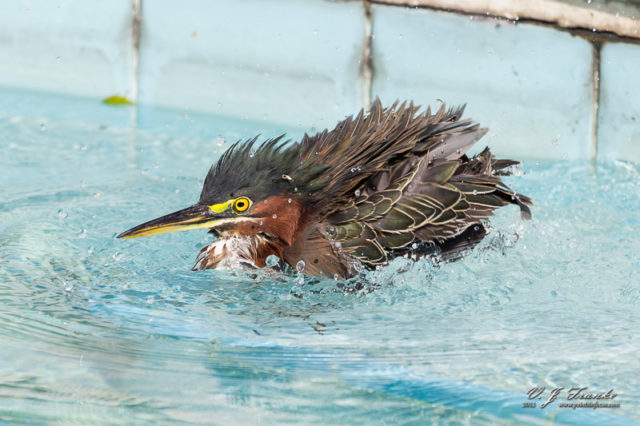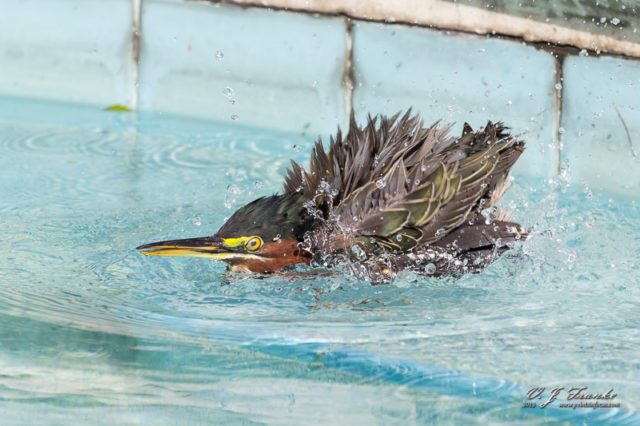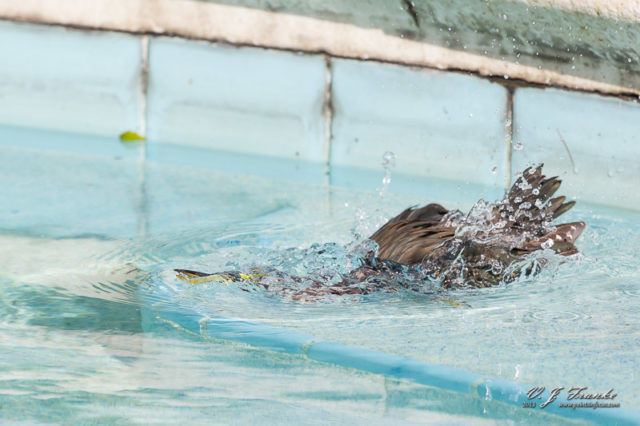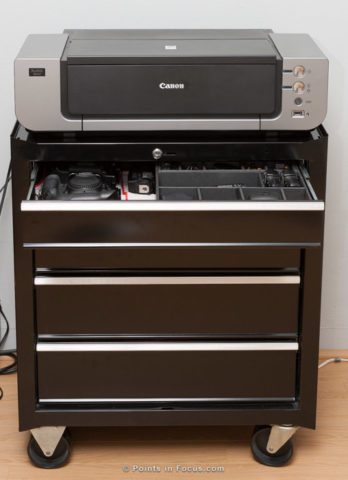

Documentation
The other day, a friend of mine trying to free up some space on their computer asked me if I knew how to delete the JPEGs from a RAW+JPEG pair in Lightroom. After scratching my head on that for a while, I threw together a Powershell script to do the job, and so I’m sharing it here in the event it might be helpful for someone else.
WARNING: Advanced computer stuff ahead.
This script is for Windows and requires Microsoft’s Powershell environment to execute. I’ve tested it in Powershell version 3 on Windows 7. If you don’t have Powershell installed, the latest version can be downloaded from Microsoft.
To run the script, place it in the top-level directory of the directory tree where you want it to scan; right-click on it and choose “Run in Powershell.” The script will prompt you before running whether you want to just build a list of files to remove or delete them. I recommend not deleting files on the first pass, just to be safe as the deletions done by this script aren’t reversible.
The script considers a JPEG to be part of a RAW+JPEG pair when the files have the same name but a different extension (.nef, .cr2, or .dng for raw, and .jpg for JPEGs), and exist in the same directory. The script recursively scans through every child directory starting from the directory the script is executed from looking for RAW+JPEG pairs.
Results are always logged to raw&jpeg.log in the same directory as the script itself.
Due to the nature of the process, the script can take some time to run, and doesn’t display progress unless it finds matches.
I recommend running the script and verifying that the files it’s selected to delete are in fact RAW+JPEG pairs, before deleting them.
This tool is provided without warranty or support.
Download: Clean RAW+JPEG JPEG.zip
When I first started with Radio Triggers you had basically two options, some cheap modules of questionable reliability that were marketed under a number of brands, and LPA Design’s Pocket Wizards. That was a scant 5 years ago, and since then the radio trigger marketplace has changed dramatically. Pocket Wizards, while still the Cadillac of radio triggers, have had their reliability and capabilities matched and in some cases beaten. In short, the question of which triggers are best has become considerably more complicated.
The simple reality is that there is now a massive number of competing radio trigger products on the market in every product space. The entry-level market, for example, is awash in similar products from various brands that have little if anything to differentiate them from each other. Almost all of the studio strobe makers have joined in the radio trigger market, producing triggers designed primarily to provide users of that manufactures strobes with remote power control and cordless triggering; though many of these systems also have generic modules available. TTL systems have become more commonplace, with a range of products from inexpensive designs to fully featured and integrated ones.
My intent here isn’t to recommend a product. What I use and what I need aren’t what you use or you need, and my solutions aren’t necessarily your solutions. Instead, what I’ve tried to do is cover most of the available systems and the pros and cons as I see them. You then can use this as a launching point to dig further into the solutions you find best fit your needs.
Continue on to page 2 for an overview of features and functionality to consider. Skip to page 3 for an overview of the systems. Skip to page 4 for data tables comparing the various systems.



Nikon has long been a company that’s made me wonder about who they have designing their camera’s user interface. They seem quite pleased to have had Giorgetto Giugiaro style many of their cameras, but at the same time the cling to user interfaces that seem stuck in an bygone era with no apparent consideration for advances in technology or techniques.
The lineage of their standard DSLR UI can be clearly seen all the way back to it’s roots in the F6 and F100. Keep the same layout, add some more buttons for the new digital stuff wherever they fit. It seems to me that in their quest to preserve a consistent UI Nikon never really did stop and consider what made sense for the camera and technology.
The Nikon Df compounds the problem in so many ways as it attempts to graft a truly retro, not just a retro inspired UI onto a otherwise standard Nikon DSLR body. The issues with the Df’s UI are compounded in a couple of ways. First, Nikon doesn’t seem to have been fully committed to the retro interface. Were they afraid that if it was too retro in function they would lose sales?
The wishy-washy lack of commitment to me is most obvious in the design of the shutter speed dial. In a mechanical camera the shutter dial is the one and only place to adjust the shutter speed. On the Df, that’s not really true, instead you have a mishmash of controls and functions that leave me asking why they even bothered in the first place.
Read the rest of the story »
One of the big frustrations I always run into with camera stuff is the amount of little fiddly bits you end up with. Grip gear is especially aggravating to me since there’s all the lovely little studs and adapters and various bits and pieces, to go along with the clunky odd shaped clamps and brackets. I thought for a long time about buying tackle boxes and doing something with that, but I had problems with that given that none of this stuff is really tackle sized.
Well, let me rewind a moment.
I keep most of my camera gear in a 26” rolling tool chest. Yes, the kind mechanics use. I actually used a camera bag on my desk until I got a really good deal on a Pixma Pro 9000 a couple of years back and needed to find a printer stand that could support a 26” wide printer. So not only does the tool cart serve as a printer stand, but it gives me a lot of drawers to put camera and printer stuff in.

Last week I was going through my RSS feeds when I came across this article on DIY Photography where the author was ranting about losing business because a client wanted the job shot with a full frame camera and not a “crop” camera. While I have my own thoughts on that issue, it reminded me of an article I started writing a couple of years back on crop factors and formats.
It’s long been a thing in digital photography to talk about crop sensor cameras. APS-C, DX, micro-4/3rds, you know the ones. Personally, I’ve about had it with that; it needs to stop. There was a time where there was some truth to some of those formats being crops, but that time is largely gone. As far as I’m concerned, none of the so-called crop formats are really crops of anything anymore, but rather are formats on their own that should be treated that way. They may have been in the past, 10 or more years ago, but they aren’t any longer.
For me the line in the sand is simple. I consider a format is a crop when it’s expected to exist in a system without anything being designed to accommodate it specifically. Likewise, it becomes a format on it’s own when its eccentricities are catered to specifically (whether by design or evolution), and definitely, when it develops conventions that are broadly conformed to across manufacturers. It’s not that something shares a lens mount that makes it crop or not; it’s whether lenses are designed specifically for that size frame, which draws the distinction in my mind.
APS-C has most certainly crossed that line. It made the jump ages ago, but nobody was apparently paying attention. It made the jump, the moment the camera makers started making lenses specifically for that frame size instead of leaving photographers stuck with using full frame lenses that never really covered the right angles of view or simply left them lacking coverage.
No camera is perfect, and no system is as well. Canon, like most camera manufacturers, does a good job of pushing forward on all the myriad of fronts that cameras require advancement on each successive generation. That said, the devil is in the details, or so the saying goes. As refined as Canon’s system is, there are still loads of little rough edges that could, and should, be smoothed over. These are 3 that I constantly seem to come back to wishing were smoothed over.
Better High-end Battery Compatibility
Put it this way, I should be able to slap my LP-E4 batteries form my 1D into the battery grip for my 5D or 7D and go shooting.
Yes, it’s a small gripe, though if you’ve read any of my material in the past, including my review of the BG-E11 battery grip, you’ll find battery compatibility is a long running pet peeve of mine. I’m sure that Canon has never lost a Camera sale because the battery in the 1D can’t be used in a gripped 7D/5D. Likewise, I’m sure nobody is dying because their $8000 camera and their $3000 camera can’t share batteries.
That said, why shouldn’t compatibility be the standard design? It’s just good system design, and it rounds over yet another little edge that makes our lives as photographers just a shade easier.
Ultimately it comes down to compatible batteries allow me to carry less crap when I travel. For example, as it stands now, if I’m traveling for any length of time I’m carrying:
- a charger for my 1D
- a charger for my 5D
- a surge strip to plug them all in so I don’t lose any of them
- 6 camera batteries—a primary and backup for my 1D and a primary and backup set for my gripped 5D
Give me my desired battery compatibility and I need to pack and carry half as much carp. Since I know I can get buy on a single LP-E4 a day, I can carry 1 charger and 3 batteries instead of the list above. What’s not to like about that.
Besides, it’s not as if it’s bad for Canon’s bottom line either. At best, it’s a wash; I’m buying fewer more expensive batteries instead of more cheaper ones. Nor does it seem like it should be a big engineering problem. The semi-pro camera’s already have to regulate and step down the 7.2v battery voltage to the 1.5-3.3V the electronics use. Heck it’s likely the regulators can already deal with the higher voltage from the pro batteries as it stands. Further, the problem of designing a compatible battery grip, isn’t any more difficult than designing incompatible battery grip.